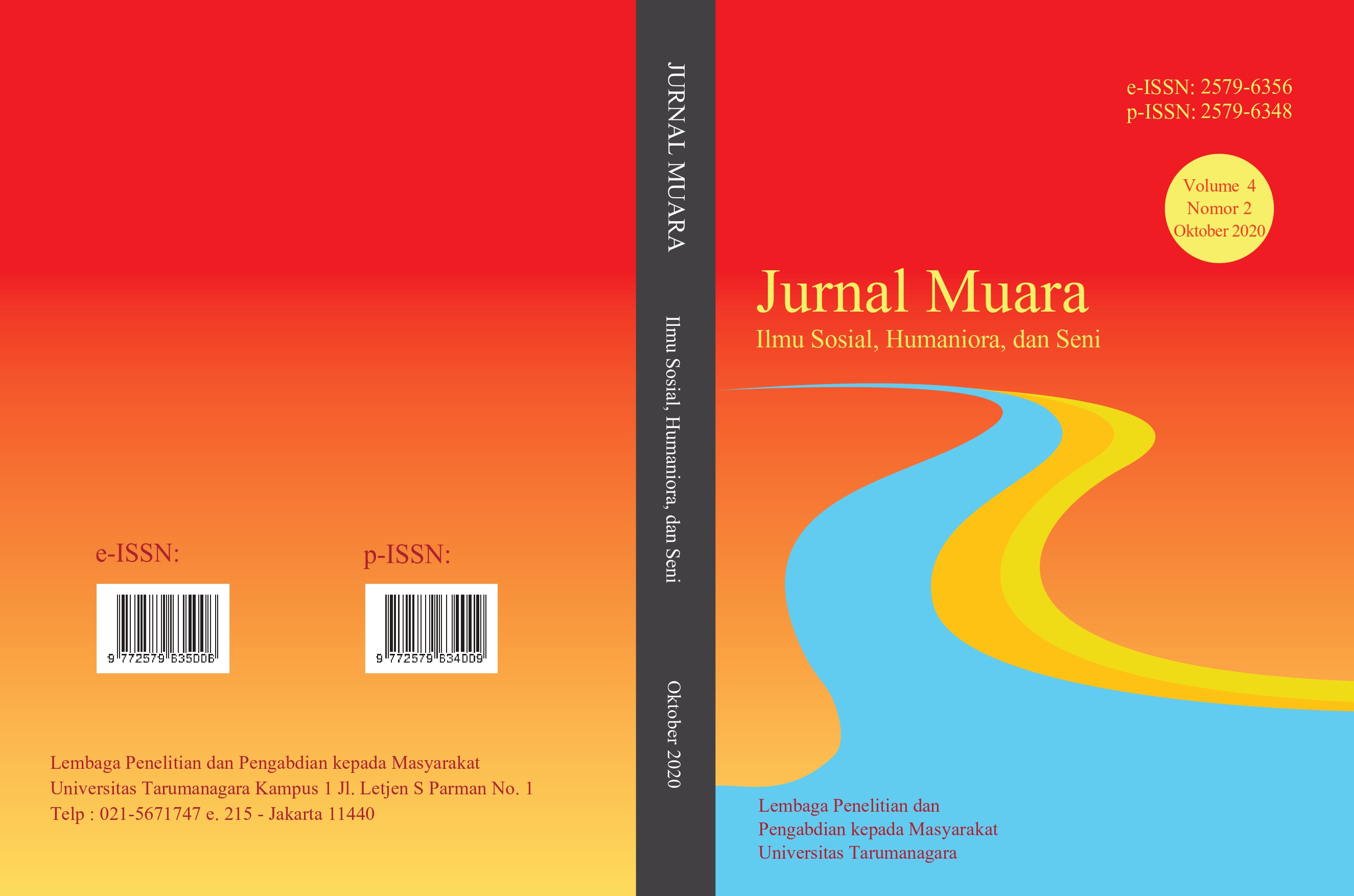PERAN KETIDAKNYAMANAN KERJA TERHADAP INTENSI PINDAH KERJA
Main Article Content
Abstract
PT X is a startup company engaged in financial technology, experiencing an increased in the number of turnover. Turnover has a negative impact on the company. Company will lack human resources and need time recruiting and training new employees. Turnover intention is an accurate predictor of the number of turnover. An organization can’t eliminate the intention of employee turnover, but can reduce the level of intention. One of the factor that cause frequent employee desires to leave the company are employee insecurities at job. T test results of this study indicate that the standard value of the coefficient job insecurity is 0.189 with a significance level of 0,000. Based on the results can be concluded that job insecurity has a significant and positive effect of turnover intention.
PT. X adalah perusahaan rintisan yang bergerak di bidang financial technology, mengalami peningkatan angka pindah kerja. Pindah kerja memberikan dampak yang negatif bagi perusahaan. Perusahaan akan kekurangan sumber daya manusia dan membutuhkan waktu untuk merekrut serta melatih karyawan baru. Intensi pindah kerja adalah peramal yang akurat terhadap angka pindah kerja. Suatu organisasi tidak dapat menghilangkan intensi pindah kerja karyawan, namun dapat mengurangi tingkat intensi tersebut. Salah satu faktor yang menyebabkan sering terjadinya keinginan karyawan untuk keluar dari perusahaan tempat bekerja adalah perasaan tidak nyaman karyawan pada pekerjaannya. Hasil Uji T pada penelitian ini menunjukkan bahwa nilai standar koefisien yang diperoleh pada ketidakamanan kerja sebesar 0.189 dengan tingkat signifikansi 0.000. Berdasarkan hasil tersebut dapat disimpulkan bahwa ketidaknyamanan kerja berpengaruh signifikan dan positif terhadap intensi pindah kerja.
Article Details
References
Adesubomi, A.B. (2018). Impact of employees’ job insecurity and employee turnover on organisational performance in private and public sector organisations. Studies in Business and Economics, 13(2), 5-9. Doi: 10.2478/sbe-2018-0016
Agustina, T., & Sjabadhyni, B. (2014). Hubungan antara sikap terhadap uang dan turnover intention pada karyawan. Universitas Indonesia. https://www.google.com/url?sa=t&rct=j&q=&esrc=s&source=web&cd=&ved=2ahUKEwjJquSQsuvtAhWO4XMBHX0QA3wQFjAAegQIAxAC&url=http%3A%2F%2Flib.ui.ac.id%2Fnaskahringkas%2F2016-12%2FS58631-Tri%2520Agustina&usg=AOvVaw1Yj_FSCi6FLBNOcL8-CP5d
Al Battat, A. R., Som, A. P. M., & Helahat, A. S. (2013). Overcoming staff turnover in the hospitality industry using Mobley’s model. Journal of Learning & Development, 3(6), 64-71. Doi: https://doi.org/10.5296/ijld.v3i6.4844
Alghamdi, F. (2018). Job insecurity, organizational commitment, financial responsibility, and turnover intention, a test of three-way interaction. International Business Research, 11(6), 213-225. Doi:10.5539/ibr.v11n6p213
Areitio, A. (2019, Januari 16). From idea to scaleup: Startup stages, understanding the milestones at every Stage Toward Success. https://medium.com/theventurecity/fromidea-to-scaleup-startup-stages-a268799325d7
Arjanti, R. A., & Mosal, R. L. (2012). Start-up, Indonesia! inspirasi dan pelajaran dari para pendiri binsis digital. Jakarta: Kompas.
Bussgang, J. J. (2017, November 01). Are you suited for a start-up?. https://store.hbr.org/product/are-you-suited-for-a-start-up/r1706m?sku=R1706M-PDF-ENG
Elst, V. T., Witte, H. D., & Cuyper, N D. (2014). The job insecurity scale: A psychometric evaluation across five European countries. European Journal of Work and Organizational Psychology, 23(3), 364–380. https://doi.org/10.1080/1359432X.2012.745989
Ersafitri, O. (2015). Pengaruh relationship cultivation sebagai strategi public relations terhadap brand image (Studi pada facebook fan page bunda konicare). Jurnal Ilmiah Universitas Bakrie, 3(3). https://www.neliti.com/publications/253753/pengaruh-relationship-cultivation-sebagai-strategi-public-relations-terhadap-bra#cite
Jennings, L. A. (2014). Comparison study: Office-based and telecommuting call center employee’s level of job satisfaction and turnover intent. Dissertation Abstracts International Section A: Humanities And Social Sciences.
Kim, K. I. (2008). “The effects of burnout on turnover intention: The moderating effect on communication satisfaction [In Korean] (Unpublished master’s thesis)”. Kyungpook National University, South Korea.
Lee, S. H., & Jeong, D. Y. (2017). Job insecurity and turnover intention: Organizational commitment as mediator. Social Behavior and Personality, 45(4), 529–536. Doi:
https://doi.org/10.2224/sbp.5865
Mauno, S., De Cuyper, N., Tolvanen, A., Kinnunen, U., & Mäkikangas, A. (2014). Occupational well-being as a mediator between job insecurity and turnover intention: Findings at the individual and work department levels. European Journal of Work and Organizational Psychology, 23(3), 381–393.https://doi.org/10.1080/1359432X.2012.752896
Pillay, S. (2006). The relationship between job insecurity, job satisfaction and organizational commitment in a telecomunication organization. University of KwaZulu, South Africa. researchspace.ukzn.ac.za/bitstream/handle/10413/1394/Pillay_S_2006.pdf?isAllowed=y&sequence=1
Rahayu, N. (2018, April 06), 7 Karakteristik Startup. Di unduh dari
https://www.wartaekonomi.co.id/read176487/7-karakteristik-startup.html.Start Up Ranking. (2018). Startups ranking per country. Di unduh dari https://www.startupranking.com/countries



